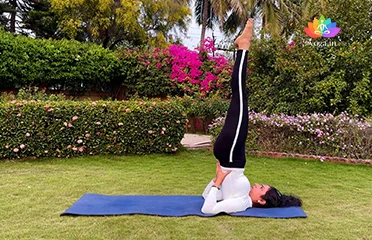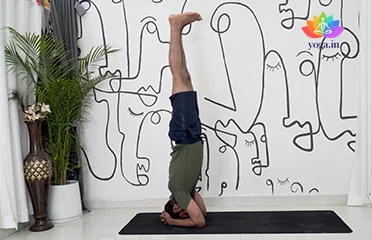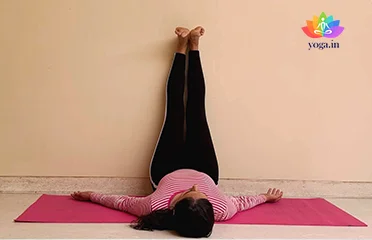Sarvangasana (Shoulderstand)
सर्वाङ्गासनI / Shoulderstand
The Sanskrit name is derived from Sarva (सर्वाङ्ग) meaning all, [�K]
Sirsasana (Headstand)
शीर्षासन / Headstand
The Sanskrit name is derived from Sirsa (शीर्ष) meaning head and asana [�K]
Viparita Karani (Legs Up The Wall Pose)
विपरिता करणी / Legs Up The Wall Pose
The Sanskrit name is derived from Viparita (विपरिता) meaning inverted [�K]
Mastering Inversion Yoga Poses: Build Strength, Balance & Confidence
Inversion poses, where the heart is higher than the head, offer unique benefits to the body and mind. These poses can be challenging but rewarding, providing a fresh perspective and a range of physical and mental advantages.
Benefits of Inversion Yoga Poses
- Increased blood flow: Inversions can improve circulation, especially to the brain, potentially enhancing cognitive function and mood.
- Strengthened core and upper body: Many inversion poses require core strength and upper body stability.
- Improved digestion: Inverting the body can stimulate digestion and alleviate bloating.
- Reduced stress: The calming effect of inversions can help manage stress and anxiety.
- Boosted energy levels: Some people find that inversions increase energy and vitality.
List of Inversion Yoga Poses
- Adho Mukha Svanasana (Downward-Facing Dog): Though not a full inversion, this pose is foundational for many inversions. It stretches the hamstrings and spine while strengthening the arms and legs.
- Viparita Karani (Legs-Up-the-Wall Pose): A gentle inversion that helps to improve circulation, reduce swelling, and calm the nervous system.
- Setu Bandhasana (Bridge Pose): This backbend is a preparatory pose for more advanced inversions, strengthening the back and legs.
- Salamba Sarvangasana (Shoulder Stand): A classic inversion that offers numerous benefits, including improved circulation, thyroid function, and digestion. It requires proper support and alignment.
- Halasana (Plough Pose): A deeper inversion than shoulder stand, it stretches the spine, shoulders, and hamstrings.
- Pincha Mayurasana (Forearm Stand): A challenging inversion that requires upper body strength and core stability.
- Salamba Sirsasana (Headstand): Considered the king of asanas, this pose offers profound benefits but requires careful instruction and practice.
- Adho Mukha Vrksasana (Handstand): Another advanced inversion that builds upper body strength, core stability, and balance.
Tips for Practicing Inversion Yoga Poses
- Start slowly: Begin with easier inversions like Legs-Up-the-Wall Pose before progressing to more challenging ones.
- Build strength: Incorporate core and upper body strengthening exercises to prepare for inversions.
- Find a qualified teacher: Proper alignment and technique are crucial for safe inversion practice.
- Use props: Blankets, blocks, and walls can provide support and confidence.
- Listen to your body: If you experience any discomfort or dizziness, come out of the pose.
Common Challenges and How to Overcome Them
- Fear of falling: Start with gentle inversions and gradually build confidence. Use props for support.
- Neck strain: Proper alignment is essential. Avoid straining the neck in headstands and other inversions.
- Lack of balance: Practice balancing poses like Tree Pose to improve balance and stability.
- Insufficient strength: Build upper body and core strength through regular practice.
Remember, inversions are not suitable for everyone. If you have high blood pressure, glaucoma, heart conditions, or neck injuries, consult your doctor before attempting them.




